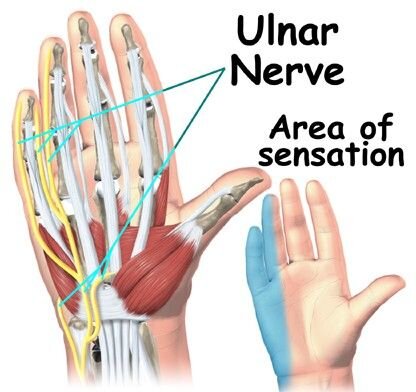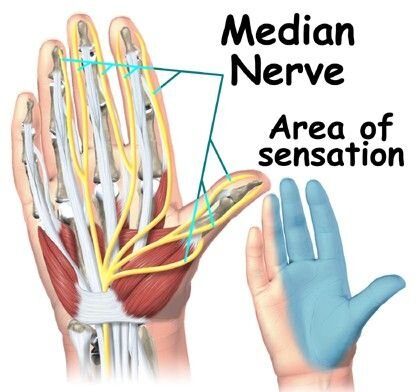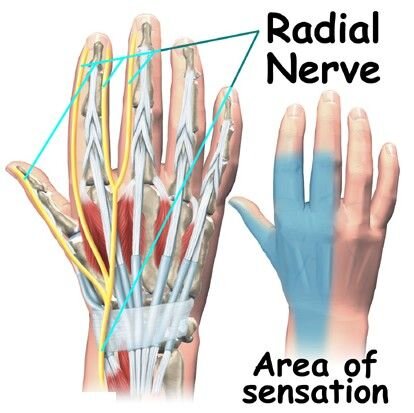Why Does My Hand Go To Sleep?
A light bulb works by receiving (electrical) impulses down a wire from the main switchboard. If there is a break in the wire, or a short, or a dimmer switch is installed, then we see the result as a dimmed light bulb. Your body works on the same principle, with the brain initiating the nerve (electrical) signal, sending it down the nerves, through and around various structures of the body to where it is needed If something between your brain and hand irritates those nerves, then you’re likely to feel pins and needles, or perhaps numbness. When the destination is your hand and these nerves are irritated, then your hand will start to feel numb
We see this problem very regularly in the practice, and are often shocked and dismayed by the intrusive treatment that is often recommended to overcome this problem. As is the case with many problems, a time may come when you need medication or an operation, but we are determined to resolve the cause of your problem, and not simply side step the symptoms.
Most commonly these symptoms show up at night, when the sleeping posture aggravates two anatomical areas that can compress the whole nerve bundle supplying the arm. This info sheet refers to when an entire hand is affected. When only a specific part is, then the condition often arises in the neck. When the symptoms are present, most patients are able to restore normal sensation by shifting their body position and shaking the arm to relax it. These are typical indicators of the following.
Thoracic Outlet Syndrome
The bundle of nerves and blood vessels that supply the arm pass through a gap formed by the first rib, the collar bone, and a muscle group called the scalenes at the front/side of the neck. A slouched shoulder posture, the typical forward posture, overuse of the shoulder at work or neck tension can all reduce the size of this gap, and compress or irritate the nerves. Since the gap is called the Thoracic Outlet, this combination of symptoms is called Thoracic Outlet Syndrome.
Pectoralis Minor Muscle Tension
The bundle of nerves and blood vessels then passes outwards under the collar bone and then under a chest muscle called Pectoralis Minor. This muscle can often be shortened due to overuse at work, or with exercises like push ups. It is more often shortened when the shoulders are rolled forward due to poor posture. The shortening can lead to the compression of the nerve and blood vessel bundle and lead to the sleepy hand or arm symptoms.
Tennis / Golf Elbow & Carpal Tunnel Syndrome
This nasty triad of forearm conditions have very similar causes, and the treatment is likewise similar. These conditions are caused by at least one of the following;
unstable elbow joints causing the muscles to work more than they should
sustained muscle tension such as with a long held grip on a paint brush
overuse during normal activities eg supermarket checkout operators, sport
use of the arm with activities that the muscles are not designed for eg PC keyboard
With these conditions the tension in the forearm muscles is almost permanently elevated, the tendons become irritated due to the load, and since the nerves must all pass through these tissues, it is again very easy for the different nerves to be compressed or irritated and lead to neurological changes. Typically with these conditions only one nerve is affected, and can be identified through the following.
the ulnar, Median, and radial nerve
Since the nerves spread out like branches of a tree, different muscle tension can lead to different parts of the hand falling asleep.
the Ulnar nerve (the one with the funny bone in the elbow) supplies the little finger and usually half of the ring finger
the Median nerve passes through the Carpal Tunnel and supplies the other half of the ring finger, the other fingers and thumb but only on the palm side of the hand
the Radial nerve supplies the same pattern as the median nerve but on the back of the hand.
How Chiropractic Helps
Having these symptoms can be incredibly irritating, and debilitating not to mention frustrating. Working together with our patients, we work to restore correct function in the spine, especially in the lower neck where the nerves to the arms begin. Improving function in the thoracic spine also assists in improving posture allowing the shoulders to move backwards, and the head to sit more upright. Without correcting spinal function, there is minimal chance that the problem can be resolved by other means. By stabilising the function in the shoulder, elbow and hand joints, the arm muscles can function with stable anchor points. Alongside of this when appropriate, a combination of massage and exercises will assist in correcting the underlying cause, and in most cases will prevent the problem from recurring-.





